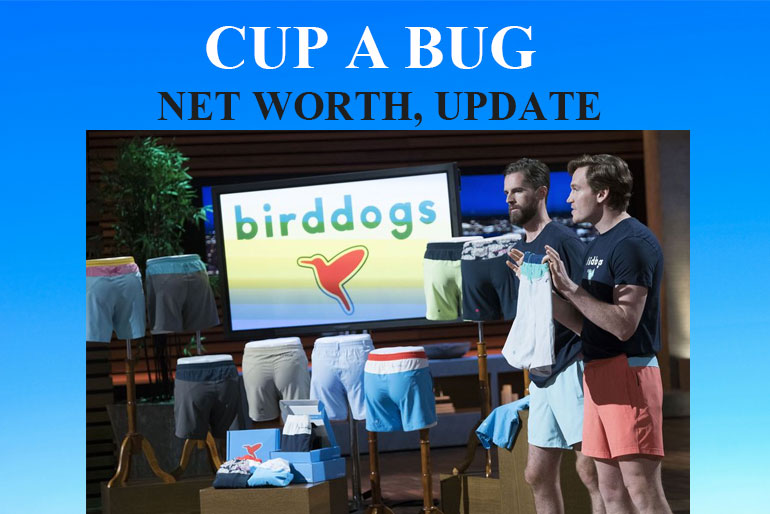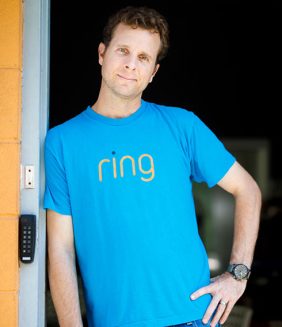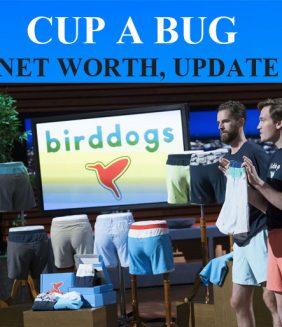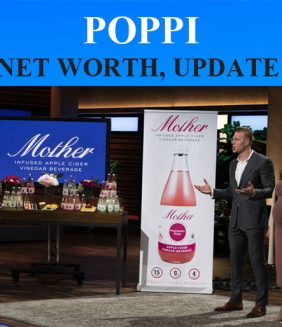Back in January 2018, Chris Mason and Peter Baldwin stepped onto the Shark Tank carpet to show off men’s athleisure shorts with a sewn-in liner—essentially athletic briefs stitched inside tailored-looking shorts. They asked the Sharks for $250,000 in exchange for 1.5 percent equity, valuing their fledgling brand at about $16.7 million. The confident pitch—equal parts product demo and college-bro comedy routine—earned laughs but zero offers. Mark Cuban called their customer-acquisition spend “bonkers,” Kevin O’Leary bristled at the valuation, and the founders left without a deal. Yet the free PR boost was priceless.
From modest first-year sales to eight-figure revenue
The Tank appearance aired near the end of Birddogs’ third year in business. By then, annual sales had already grown from $200,000 in year one to $2.1 million in year two, with a projected $6 million for 2018. The broadcast poured gasoline on that growth. Web traffic surged, repeat customers multiplied, and—and this is crucial—the company did not dilute ownership with Shark money, maintaining full control over brand voice and margins.
Fast-forward to 2024: multiple data services peg Birddogs’ online net sales between $11 million and $12 million. A separate Shark-Tank-focused outlet reports $13.9 million in annual sales, likely including Amazon and wholesale channels beyond the official storefront. Either way, the jump from six-figure revenue in 2016 to eight figures today is clear proof that the line struck a chord.
Why folks keep buying the brand’s “underwear built in” shorts
The original hero product solved a simple annoyance: gym-goers juggling mesh shorts and compression underwear. By bonding the two, Birddogs eliminated waistband bulk and offered quick-dry, odor-resistant comfort. Reviewers at Business Insider still rave in 2025 that the trunks “go from soaked to dry in ~40 minutes” and fit true to size.
Yet the magic is as much marketing as material. Social feeds overflow with tongue-in-cheek videos, pun-heavy product names (“Uncle Bucks,” “Deer Hunters”) and irreverent copy. That voice builds a tribe, not merely a customer base, and drives organic word-of-mouth that lowers paid-ad spend over time—one reason gross margins remain healthy even after rising digital-ad costs.
A product lineup that now stretches beyond shorts
Scroll Birddogs.com in 2025 and you’ll see an expanding wardrobe:
- Stretch khaki pants and chinos
- Club shorts in refined fabrics
- Quarter-zip pullovers and polos
- Dedicated swim trunks
The company sticks to its “built-in liner” DNA for bottoms while sprinkling in tops to lift average order value. Fans no longer buy a single pair for summer; they build mini-capsules for golf, gym, and casual Fridays, smoothing seasonal revenue dips.
Funding, valuation, and how that shapes “net worth” talk
Birddogs has never announced a flashy VC round. Public databases tally about $590,000 across three minor financings, plus a 2025 line of credit for working capital. A 2015 angel round reportedly valued the startup at $9 million.
Unofficial chatter muddies the picture:
| Source (Year) | Headline or Claim | Implied Value |
|---|---|---|
| Facebook video snippet (2023) | Mark Cuban “tried to buy Birddogs outright for $100 million” | $100M Rumor |
| SharkTankInsights blog (Apr 2025) | “Current net worth $27 million after 10 % CAGR” | $27M Estimate |
| Lifestyle finance blog (Dec 2024) | Projection: $120 million net worth by 2025 | $120M Forecast |
None of these numbers stem from audited filings, so treat them as educated guesses or promotional spins. Still, they give a range of how observers value the brand.
A grounded way to ballpark Birddogs’ worth
Direct-to-consumer apparel firms often sell for 2×–3.5× annual revenue if growth is solid and retention is healthy. Using the conservative 2024 top-line figure of $12 million and a midpoint revenue multiple of 2.8×, an objective back-of-the-napkin valuation lands near $34 million. If we instead take the high sales estimate ($14 million) and a bullish 3.5× multiple, the number stretches to $49 million.
That framework aligns neatly with the $27 million low-end blog figure (reflecting a lower multiple) and still leaves daylight before the splashy $100 million rumor. It’s reasonable to suggest Birddogs’ current enterprise value sits somewhere in the $30 – 50 million range, barring an undisclosed strategic bid.
Bottom line: In everyday language, the company is “worth tens of millions,” not yet a nine-figure juggernaut—but far beyond its $16.7 million Shark-Tank ask.
Key drivers that could push valuation higher
- Product breadth without channel overload. Expanding tops and accessories boosts lifetime value while keeping fulfillment centralized.
- Community-driven content. Self-deprecating ads cost less than big-budget shoots and reinforce brand personality.
- Direct control of distribution. A pure DTC model avoids wholesale margin erosion, preserving EBITDA.
- Seasonless versatility. Khakis and quarter-zips sell year-round, buffering swimwear’s summer skew.
- Nimble supply chain. Short production runs limit excess inventory risk—a lesson many apparel peers learned the hard way in 2020–21.
Challenges to watch in 2025 and beyond
- Quality-control chatter. Trustpilot and Reddit threads flag stitching or pilling after a few washes. If unaddressed, returns could spike and tarnish the “premium” halo.
- Copycat competition. Lululemon, Vuori, and even Amazon Essentials now sell lined workout shorts, squeezing differentiation.
- Ad-platform volatility. Apple’s privacy moves made CAC math trickier. Birddogs’ humor helps offset that, but reliance on Meta ads remains a risk.
- Economic softness. Discretionary retail—especially mid-to-high-price basics—tends to see slower growth when consumers tighten belts.
What’s next?
Birddogs teased on Instagram an upcoming “Storm Blue” khaki short drop and hinted at a limited New York pop-up to test in-person retail in early 2026. If the pilot works, small-footprint experiential stores could widen consumer touchpoints and justify a richer omnichannel multiple.
Meanwhile, the founders still star in almost every ad, doubling down on a “we’re still the same guys” narrative that fans find authentic—warts, dad jokes, and all. That relatability, more than patented fabric or exclusive tech, may be Birddogs’ defensible moat.
Quick FAQ
Did Birddogs get a Shark deal?
No. All Sharks passed in Season 9, Episode 15.
What were sales right after the show?
About $6 million projected for 2018, up from $2.1 million the prior year.
Current annual revenue?
Most data firms cluster between $11 million and $14 million for 2024-25.
Is there outside funding?
Roughly $590k raised plus a 2025 credit line; otherwise self-funded.
What’s the net-worth estimate?
A realistic range is $30 – 50 million based on revenue multiples; rumors stretch from $27 million to $120 million.
Where can I buy?
Direct-to-consumer at Birddogs.com; occasional pop-ups announced on social media.
Final thoughts
Birddogs proves that swagger, a single pain-point solution, and savvy DTC execution can trump a Shark’s stamp of approval. Seven years after television fame, the brand has carved out a comfortable niche, flirted with big buyout whispers, and continues to grow in the low-double-digit range. Whether the next chapter involves retail boutiques, women’s lines, or even an eventual strategic acquisition, one thing feels certain: the founders will announce it with the same goofy confidence that first caught America’s attention on Shark Tank. And they’ll probably do it while rocking shorts that still don’t require underwear.
















